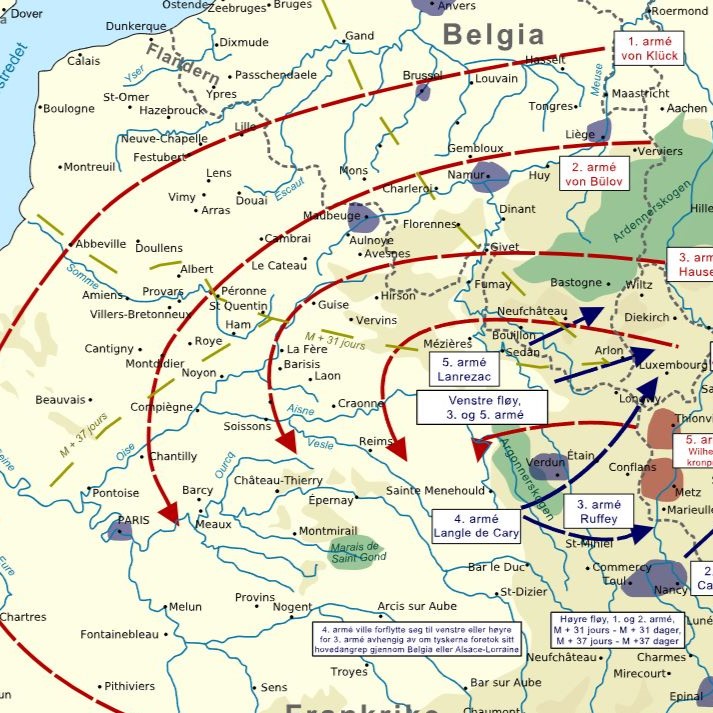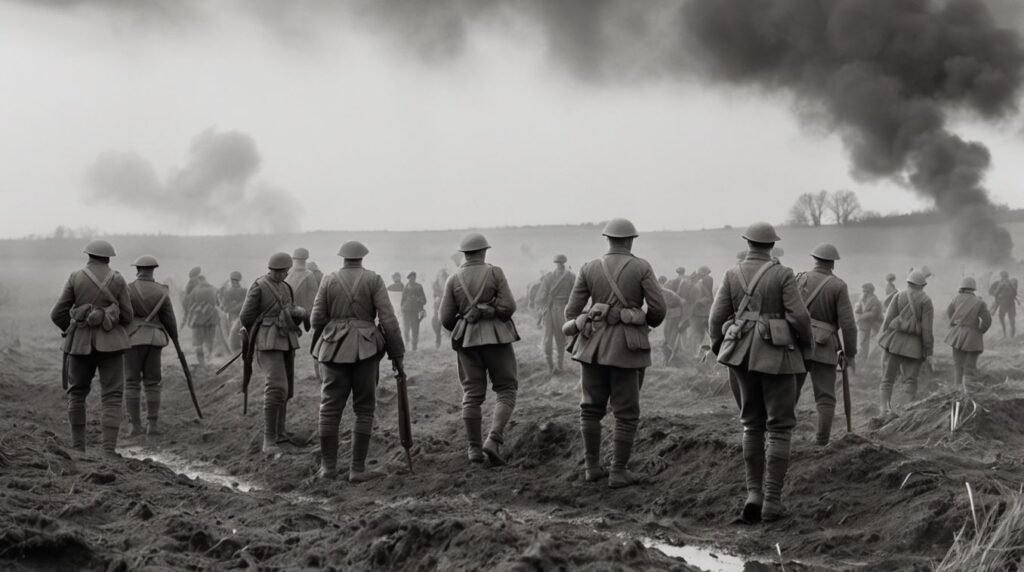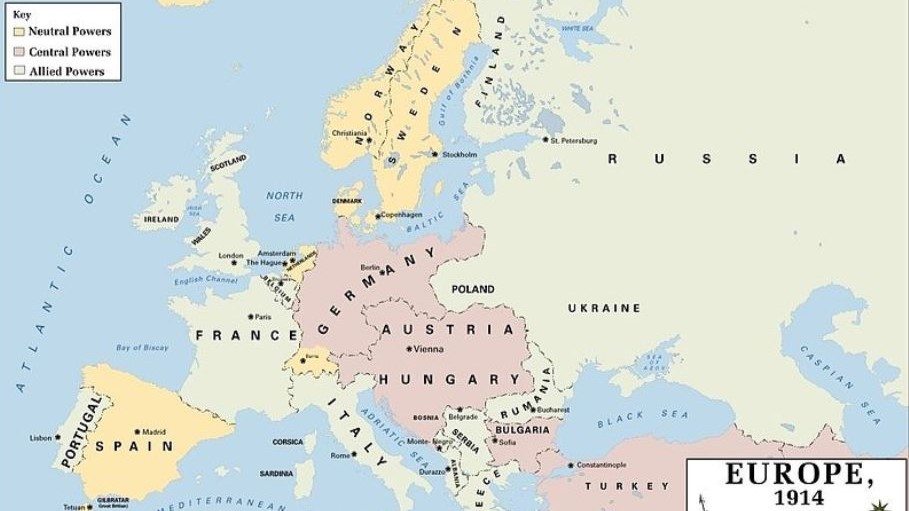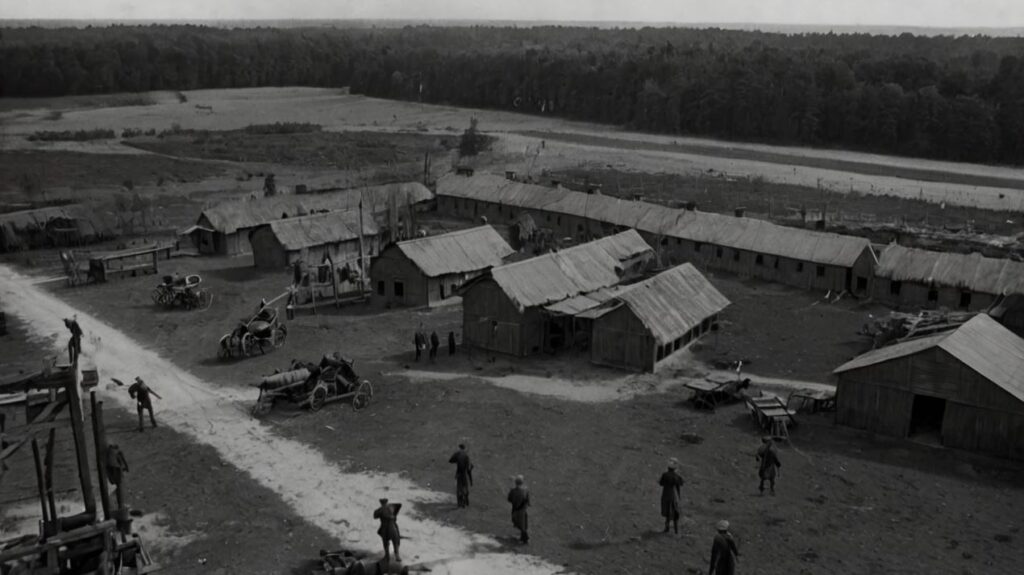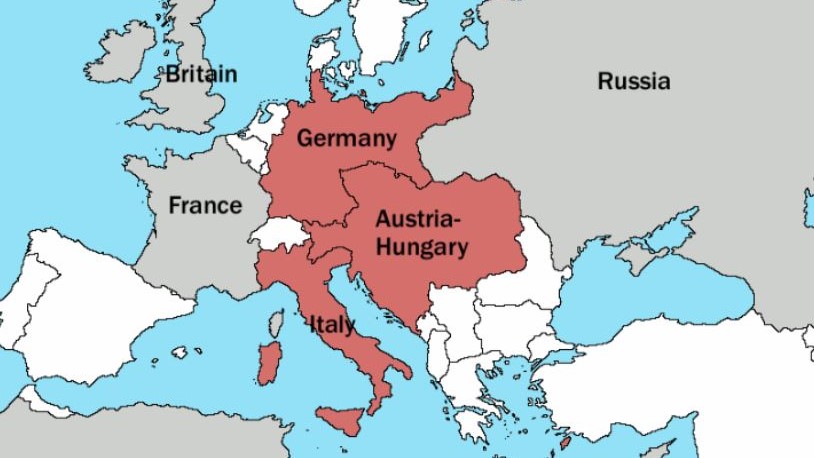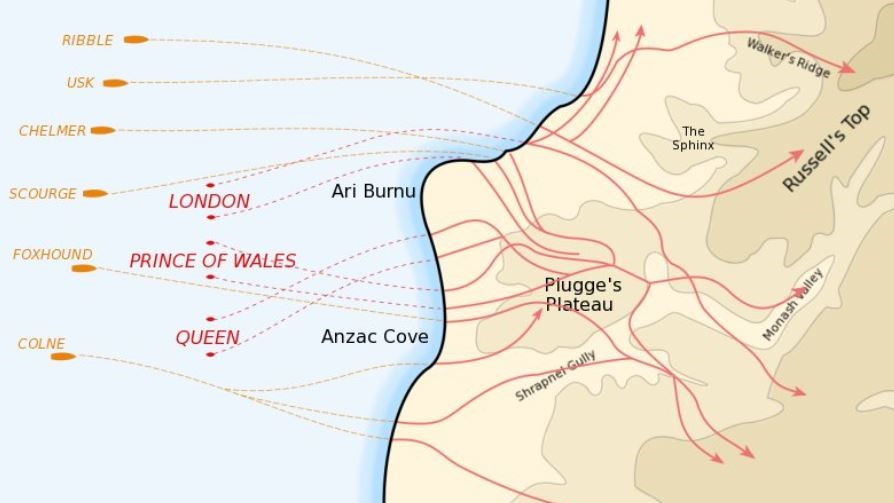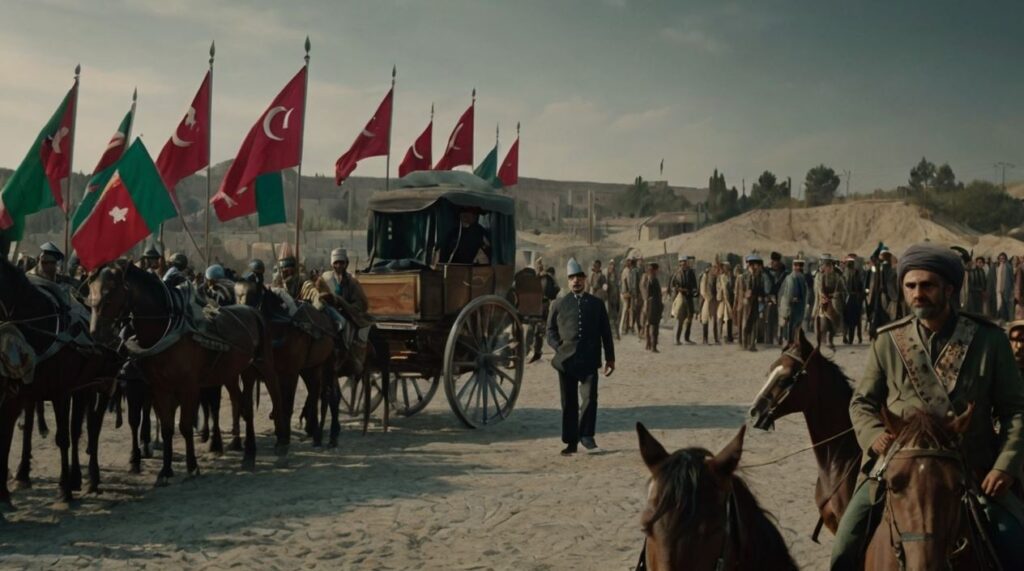What caused World War 1? Militarism, alliances, imperialism and nationalism, together forming the ominous acronym MAIN are cited as the causes of this global conflict.
World War 1 began as a regional dispute in the Balkans that exploded into a devastating global conflict lasting over 4 years and involving all major world powers at the time.
Technological advances led to modern industrialized warfare on an unprecedented scale, with tens of millions of military and civilian casualties.
Yet how did this calamity come to pass?
Many intertwined factors contributed to the outbreak of World War I in 1914, but four stand out as the overarching pillars that set the stage:
This article will discuss the MAIN causes of World War 1 in more detail.
MAIN Cause of War 1: Militarism
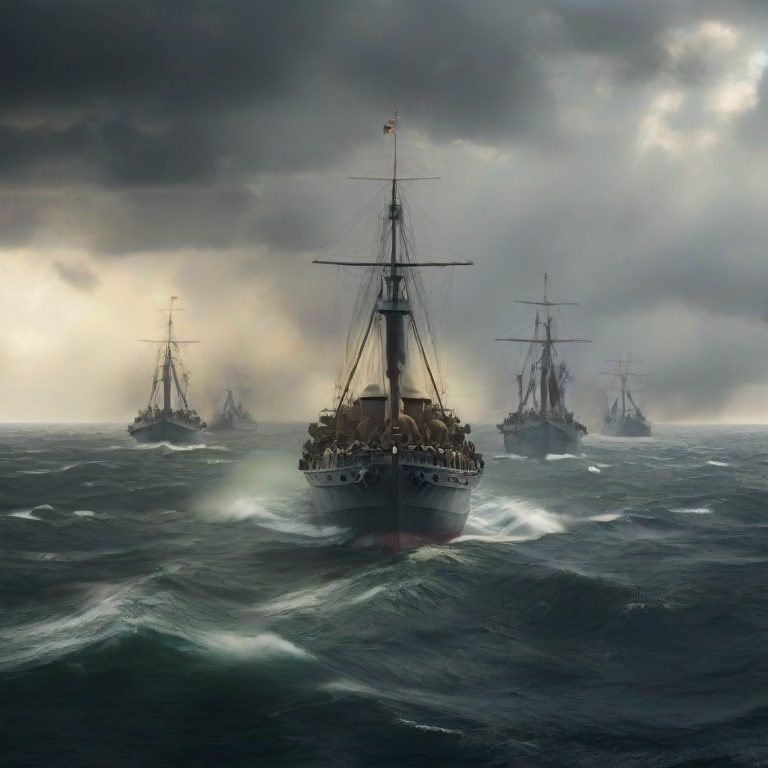
Intensive military rivalry among European powers in early 1900s
European militarism that had been steadily building over prior decades prior to WW1.
This drive sparked an extraordinarily intense arms race centered around the major powers – Britain, Germany, France, Austria-Hungary and Russia. Each sought military supremacy through expanding armies and upgrading to cutting-edge weaponry.
Conscription raised army sizes, whilst technological innovations provided deadlier armaments – quick-firing artillery, early machine guns, ironclad dreadnought battleships.
European general staffs drew up complex, ambitious war plans premised on rapid offensive operations. Railroads were constructed to shift armies quickly across fronts. Even civilian technologies like bicycles and telephones were adapted for military usage.
Defense spending skyrocketed 50% across Europe from 1890 to 1913.
Germany’s military budget notably doubled from around £40 million to £80 million by 1914.
Each power monitored its potential rivals anxiously. Britain in particular regarded Germany’s growing High Seas Fleet as a threat to its naval supremacy.
This unprecedented militarization radically altered Europe’s balance of power.
The military actions taken by the main players in the lead up to the Great War include:
Germany
- Expanded the army to over 2 million men
- Focus on growing High Seas Fleet to threaten Britain’s naval dominance
- Kaiser Wilhelm promoted aggressive Weltpolitik foreign policy
- Military budget doubled from 1890 to 1914
Great Britain
- Maintained powerful Royal Navy under “two-power standard” doctrine
- Built new Dreadnought battleships in arms race with Germany
- Viewed Germany’s naval expansion as direct security threat
France
- Enlarged ground armies to counter growing German military power
- Constructed frontier fortresses against possible German attack
- Lost territories of Alsace-Lorraine to Germany in 1871 after Franco-Prussian War
Austria-Hungary
- Sparred with Russia over Balkans; saw Serbia as threat
- Struggled militarily despite expansions
- Alliance with Germany emboldened its aggressive foreign policy
Russia
- Reforming military after embarrassing 1905 war defeat to Japan
- Implementing 5-year military expansion and modernization plan
- Building strategic railroads to enable rapid deployment of armies
Ottoman Empire
- Used German military advisers to modernize outdated forces
- Focused on countering Russia’s regional influence
- Joined Central Powers more for military support than direct interests
This unprecedented arms buildup and aggressive posturing enabled localized Balkan tensions to erupt into full-blown global war by 1914. Militarism was central in setting the stage.
MAIN Cause of War 2: Complex Pre-War Alliances
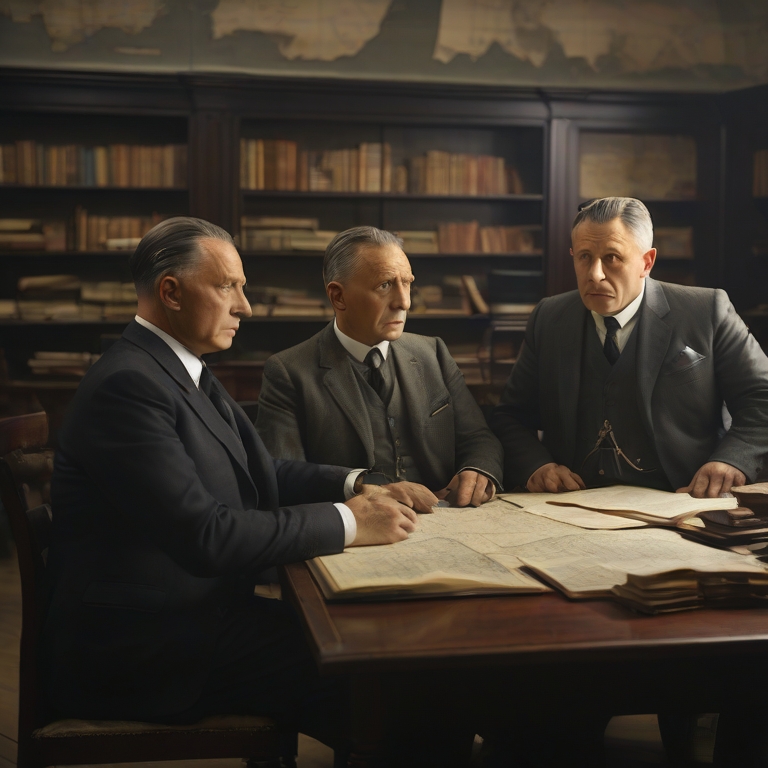
The web of alliances not only divided Europe into hostile armed camps, but also enabled leaders to bolster their military capabilities through pacts with friendly powers.
For example, Bismarck’s series of agreements with Austria-Hungary and Italy sought to isolate France while giving Germany diplomatic backups should war erupt.
The Franco-Russian Alliance similarly aimed to counter the Triple Alliance, while exchanging weapons technology strengthened both army and naval forces.
Even Britain’s “Splendid Isolation” approach shifted as German military growth threatened its interests.
Various civilian and naval leaders promoted alliances as imperative for national security. As early as 1904, British Admiral Jackie Fisher declared
“our first line of defense is France”.
Meanwhile Prussian Chancellor Bernhard von Bülow believed firmly that
“without being too demanding, we can by means of alliances improve our position internationally.”
Alliances became interdependent with the continental arms race.
When localized disputes did transform into full-scale war in 1914, these defense partnerships came into play almost automatically due to meticulous war planning.
The Schlieffen Plan’s premise to defeat France quickly relied on Russian mobilization being slower. Likewise Russia assured Serbia it would come to its aid against Austro-Hungarian aggression.

Soon the major and minor powers alike were pulled into the expanding conflict through a dense web of military commitments and battle plans.
By 1914, a complex lattice of alliances had dangerously divided Europe into two opposing armed camps:
- The Triple Alliance and
- The Triple Entente.
This system of defense pacts and agreements stretching across the continent turned what could have remained a regional Balkan conflict into a full-scale global war by ensuring that Russia and other major powers came to the aid of Serbia after Austria-Hungary declared war.
Here is a table outlining the key military alliances formed between European powers in the lead up to World War I:
| Alliance | Member Countries | Year Formed |
| Dual Alliance | Germany, Austria-Hungary | 1879 |
| Triple Alliance | Germany, Austria-Hungary, Italy | 1882 |
| Franco-Russian Alliance | France, Russia | 1894 |
| Entente Cordiale | France, Britain | 1904 |
| Anglo-Russian Entente | Britain, Russia | 1907 |
| Balkan League | Serbia, Greece, Bulgaria, Montenegro | 1912 |
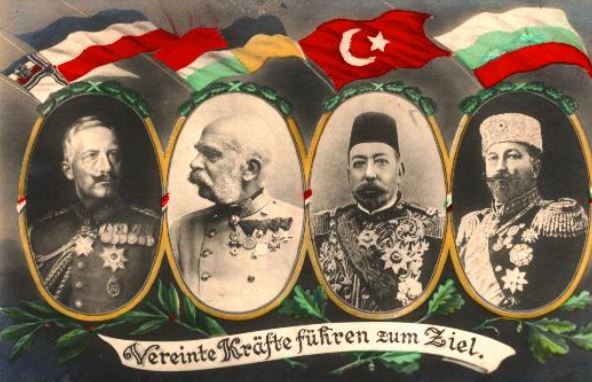
The key conditions of these alliances include:
- Dual Alliance (1879) – Established a unified German-Austro-Hungarian front against Russia & France
- Triple Alliance (1882) – Added Italy to create a Central Powers bloc
- Franco-Russian Alliance (1894) – Alliance between France and Russia countering the Triple Alliance
- Entente Cordiale (1904) – Settled colonial disputes between Britain and France
- Anglo-Russian Entente (1907) – Britain & Russia set aside regional friction and clashing interests
- Balkan League (1912) – Unified Serbia, Greece, Bulgaria and Montenegro against Ottoman Empire
This complex crisscrossing of military partnerships, in tandem with the arms buildup, led to a polarized Europe separated into two armed camps by 1914, ready to come to blows.
MAIN Cause of War 3: Imperialism
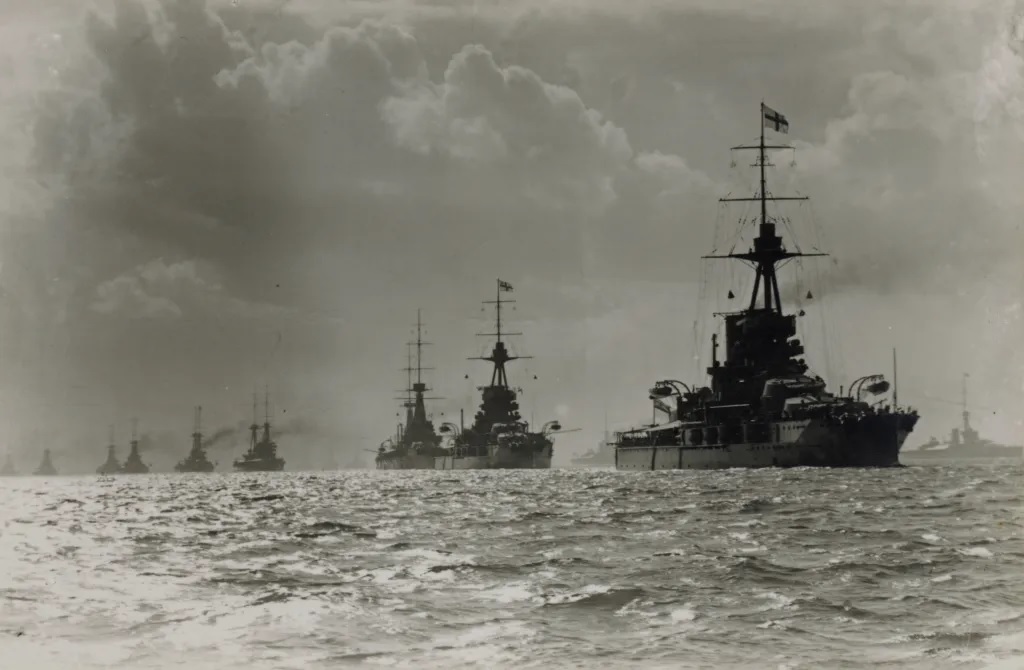
Industrialization and nationalistic sentiment drove the major powers to carve out vast empires spanning Africa, Asia, and beyond throughout the 19th Century.
This imperial competition was underpinned by economic desires as well as nationalistic ambitions to elevate prestige and international status. It also bred deep tensions that carried over to exacerbate diverging interests back in Europe itself.
Nowhere was this clearer than the fractious Anglo-German relationship, as the two jostled for colonial territories and quests for broader dominance globally.
Germany’s late unification meant it had few overseas holdings compared to Britain’s imposing Empire encompassing nearly 25% of the world. This pushed Berlin into confrontational Weltpolitik foreign policy after the 1900s – a demand for “Germany’s place in the sun” seeking trade routes, African colonies etc.
But such ambitions clashed with existing British strongholds.
Back in Europe, disputes over the economically vital Balkans also tied directly back to imperial interests.
Russia wanted access through the Turkish Straits to extend its reach towards the Mediterranean and Middle East.
Austria-Hungary similarly wished to keep Serbia and the Balkans under its thumb to preserve its fractious multiethnic empire.
Such imperial tensions created an environment primed for confrontation.
The key imperial relationships between major powers in the years prior to World War I included:
| Countries | Key Aspects of Imperial Rivalry |
| Britain vs. Germany | Competition over African colonies; Arms race between British Royal Navy and German High Seas Fleet; Disputes over resource-rich territories like Pacific Islands, portions of Africa |
| Russia vs. Austria-Hungary | Competing influence over Balkan territories like Serbia and Bosnia; Access to Turkish Straits linking Black Sea to Mediterranean; Pan-Slavism vs. preserving Habsburg Empire |
| Britain vs. France | Colonial disputes in Africa (Fashoda crisis); Economic competition in China through spheres of influence. |
| Ottoman Empire | Declining empire dubbed “sick man of Europe; Battled with Russia over territory; Lost lands to Europeans and nationalist movements |
| Italy | Desires for more colonies and international prestige despite membership in Triple Alliance; War against Ottoman Empire over Libya in 1911-12; Joined Entente in 1915 with promises of Habsburg lands. |
The key facet was constant friction, disputes and diverging interests tied to imperial ambitions within Europe and oversees colonies/markets – all ready to spark a global conflict.
MAIN Cause of War 4: Nationalism
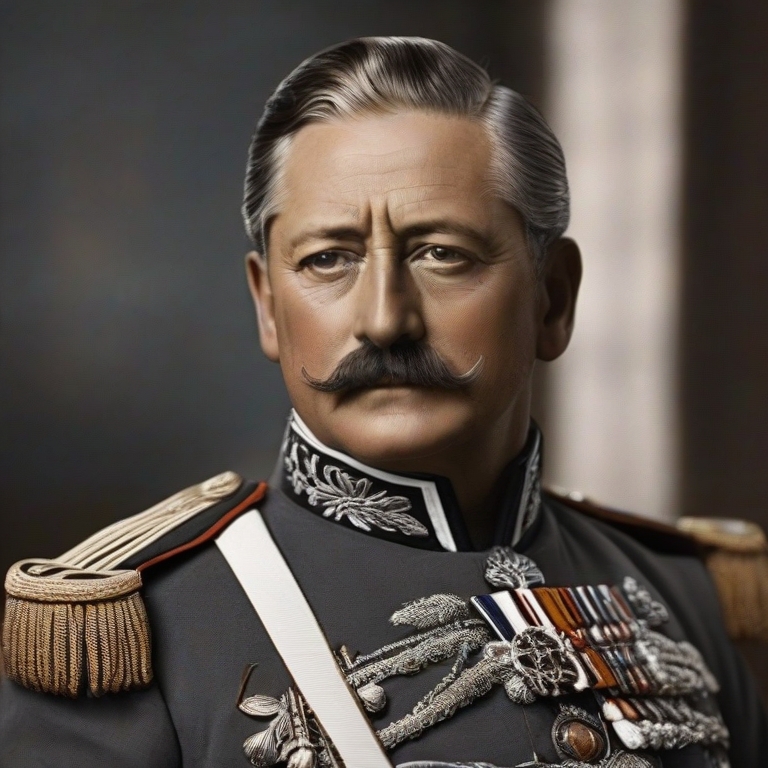
Nationalism was another potent ingredient in 1914’s combustible mix, as people across Europe increasingly identified with their shared language, culture, and national heritage rather than local regions or rulers.
This sentiment spanned large and small states alike. Larger powers saw nationalism as justification for expanding armies, colonial conquests that enhanced prestige.
Meanwhile, even minority groups like Serbs, Poles, and Irish sought to carve out their own recognized homelands or political autonomy.
Ethnic tensions fractured imperial patchworks like Austria-Hungary and Ottoman Turkey.
The cry for national “unification” also led France to bitterly resent Germany for annexing the borderlands of Alsace-Lorraine after 1871, determined to one day regain what they viewed as rightfully French soil.
Such intense nationalism fostered exaggerated patriotism.
Political assassinations and terrorist attacks became justified for the nationalist cause. Princes like Austria’s Archduke Ferdinand thus became targets from their own restive minorities.
This fervent nationalism snowballed events in 1914.
Serbia would risk war over predominantly Slavic Bosnia. Russia backed Slavic Orthodox Serbs out of pan-Slavic solidarity. France refused to abandon Russia against Germany, whom it was desperate to defeat and regain lost lands from.
The key nationalist movements in Europe prior to World War I included:
| Movement | Ethnic Group | Countries Involved | Key Dates | Key Events |
| Pan-Slavism | Slavic peoples | Russia, Balkan states of Austria-Hungary | 1849 onwards | Desire to unify Slavic groups in southeast Europe, protect Orthodox Christians under Ottoman control |
| Irish nationalism | Ethnic Irish | Britain, Ireland | 1916 | Easter Rising rebellion brutally suppressed by Britain |
| Zionism | Jews | Ottoman Palestine, Europe | 1897 onwards | Movement to establish Jewish homeland in historic Israel/Palestine |
| Unification of Italy | Italians | Italian provinces, Austria | 1861 | Kingdom of Italy declared after decades of war against Austria |
| Polish nationalism | Poles | Germany, Russia, Austria (Polish lands split between empires) | 1863 | Polish revolt against Russian rule fails, autonomous Congress Poland established |
| Irredentism | Italians, French | Italy, France vs Austria | 1860s onwards | Italy and France sought to reclaim ethnic homelands under Habsburg control |
| Pan-Germanism | Ethnic Germans | Germany, Austria | 1860s onwards | Movement to unite German people across Austria-Hungary and German Empire |
These nationalist tensions regarding self-determination and autonomy were major contributors to instability in the decades preceding WWI, with several violent rebellions and Europe’s map being repeatedly redrawn along ethnic lines after major powers entered conflict.
The Catalyst for a Global War
The immediate trigger that set off World War I was the assassination of Austria-Hungary’s Archduke Franz Ferdinand by a Serbian nationalist gunman on June 28, 1914.

However, the ensuing chain reaction of declarations of war stemmed directly from the tangle of alliances and ongoing tensions linked to militarism, imperialism and nationalism during this period.
While touring Bosnia, Ferdinand was killed by Gavrilo Princip, part of the Serbian “Black Hand” secret society that sought to end Austro-Hungarian rule over Slavic peoples.
Vienna issued a stern ultimatum to Serbia with Germany’s full support. When small Serbia refused total capitulation of its sovereignty, Austria-Hungary declared war on July 28, 1914.
This local dispute immediately exploded outward due to Russia’s vow to defend Serbia, Germany’s public backing of Austria-Hungary, and an intricate array of war plans based around rapid offenses west and east. Within days, Russia and France were at war with Germany and Austria-Hungary.
Germany’s attack on France brought Britain into the fray by early August based on Entente commitments.
Soon the Ottoman Empire joined the Central Powers, while countries like Italy, Japan and the United States were pulled into the widening battle.
This chain reaction stemmed directly from the alliance structures and imperial interests overlaying ethnic disputes in the Balkans.
This interplay between militarism, alliances, imperialism and nationalism constituted the essential preconditions to transform the assassination of 1914 into a major global conflict. Its roots stretched back years as complex international forces aligned towards disaster.

